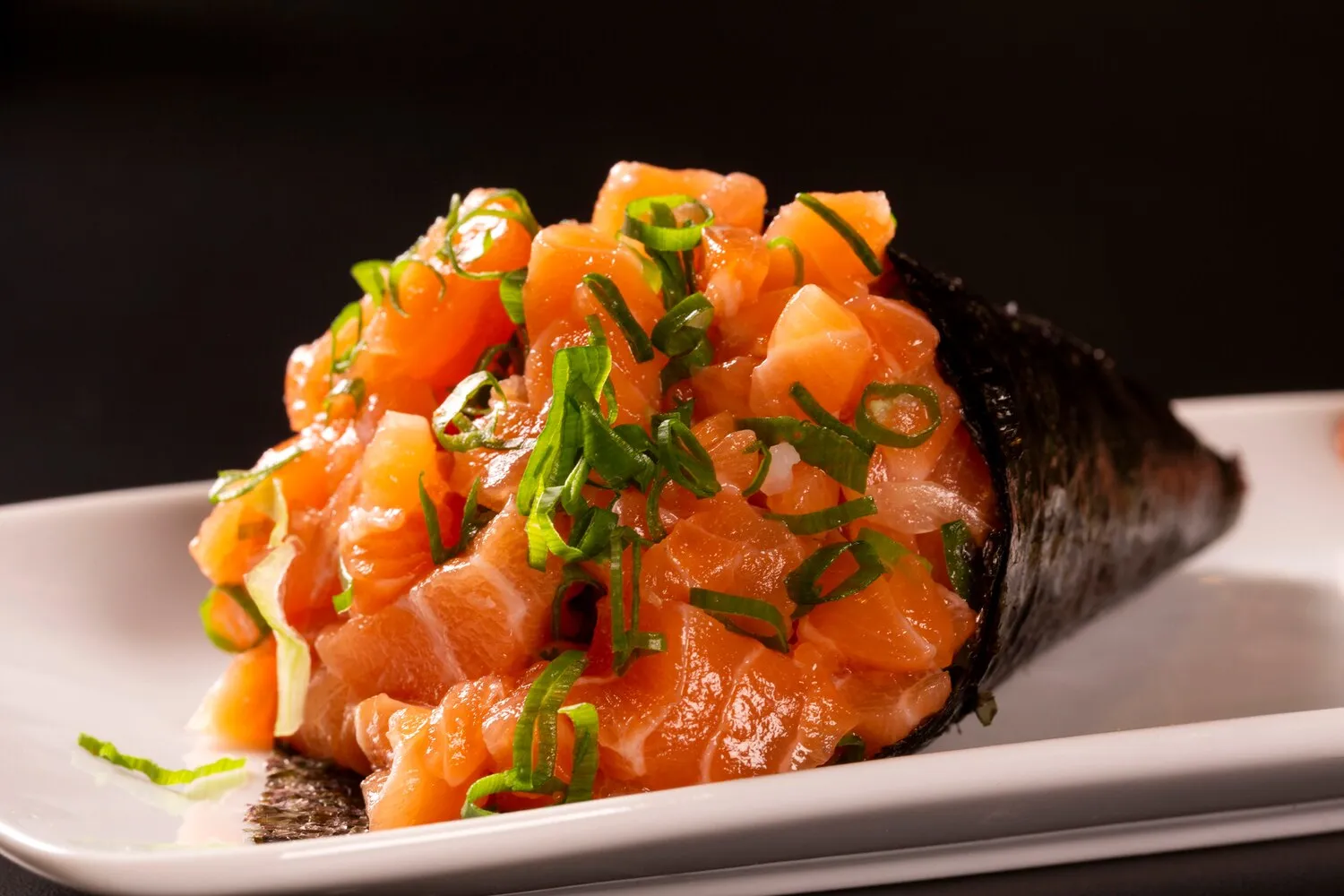
Temaki
Hand-rolled sushi cones. Various fillings available, often salmon, tuna or shrimp.
Nutrition Facts
* The % Daily Value (DV) tells you how much a nutrient in a serving of food contributes to a daily diet. 2,000 calories a day is used for general nutrition advice.
Sugoi
The history of sushi dates back to ancient Southeast Asia, where fish was preserved in fermented rice. This technique spread to Japan, where it evolved over centuries. Temaki, as a more informal and accessible type of sushi, likely developed later, becoming popular as a quick and easy way to enjoy sushi at home or at casual gatherings, especially during the more modern era.
Temaki is deeply intertwined with Japanese culture, representing a casual and communal dining experience. It is often enjoyed at home during family meals or informal gatherings, offering a customizable and interactive way to enjoy sushi. The preparation and consumption of Temaki are typically less formal than that of nigiri or maki sushi.
DIY Sushi
Temaki allows individuals to create their own personalized sushi cones, making it a fun and interactive dining experience. This hands-on approach encourages participation and allows for customization based on individual preferences.
Casual Dining
Temaki is typically enjoyed in a relaxed and informal setting, often at home or at casual restaurants. This contrasts with the more formal settings sometimes associated with other types of sushi.
Communal Sharing
The ingredients for Temaki are often arranged on a table, allowing everyone to select their desired fillings and create their own cones. This fosters a sense of community and shared enjoyment.
Temaki boasts a delightful combination of fresh, savory, and umami flavors. The crisp nori seaweed provides a distinct oceanic taste, while the sushi rice offers a subtly sweet and tangy foundation. The fillings, typically fresh seafood and vegetables, contribute their own unique flavors, creating a balanced and satisfying culinary experience.
The key flavors in Temaki come from its components: *Nori*: Provides a salty, slightly roasted, and umami taste. *Sushi Rice*: Seasoned with vinegar, sugar, and salt, lending a sweet and sour flavor. *Seafood*: Salmon offers a rich, oily taste; tuna is savory and meaty; shrimp provides a sweet and slightly briny flavor. *Vegetables*: Cucumber adds a refreshing crispness; avocado offers a creamy, buttery texture; sprouts contribute a slightly peppery flavor. *Condiments*: Wasabi delivers a sharp, pungent kick, while soy sauce adds saltiness and umami depth. Other common additions include pickled ginger (gari) to cleanse the palate between bites, and spicy mayonnaise for added richness and heat.
Rice Preparation
Use freshly cooked, properly seasoned sushi rice for the best flavor and texture. The rice should be slightly sticky but not mushy.
Nori Crispness
To prevent the nori from becoming soggy, use it immediately after removing it from the package. If needed, lightly toast the nori over a flame or in a toaster oven to enhance its crispness.
Filling Placement
Place the fillings diagonally across the nori sheet, leaving some space at the edges for easy rolling. Avoid overfilling the cone to prevent it from tearing.
Enjoy Immediately
Temaki is best enjoyed immediately after assembly. This ensures that the nori remains crisp and the rice stays at the optimal temperature.
Explore additional Sushi dishes and restaurants
Explore SushiDiscover top dining spots and culinary experiences in Marília.
Explore MaríliaLearn more about the food culture, restaurant scene, and culinary heritage of Brazil.
Explore Brazil